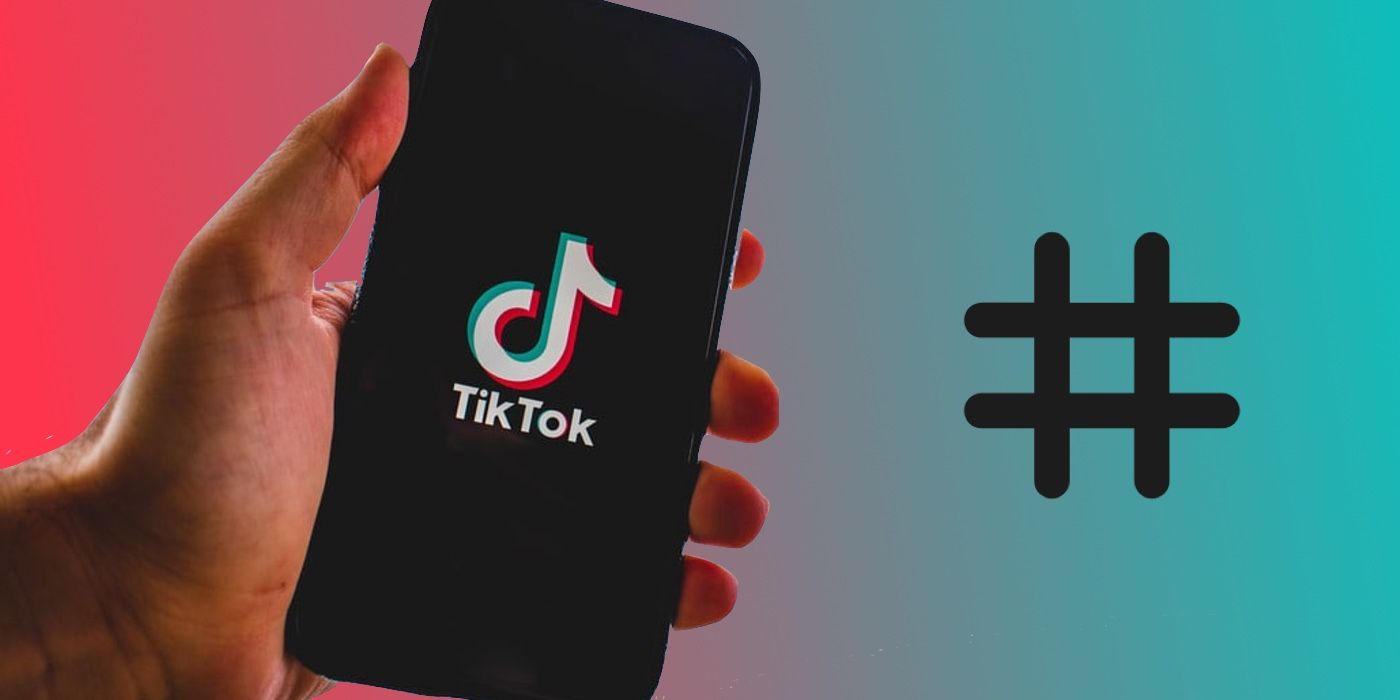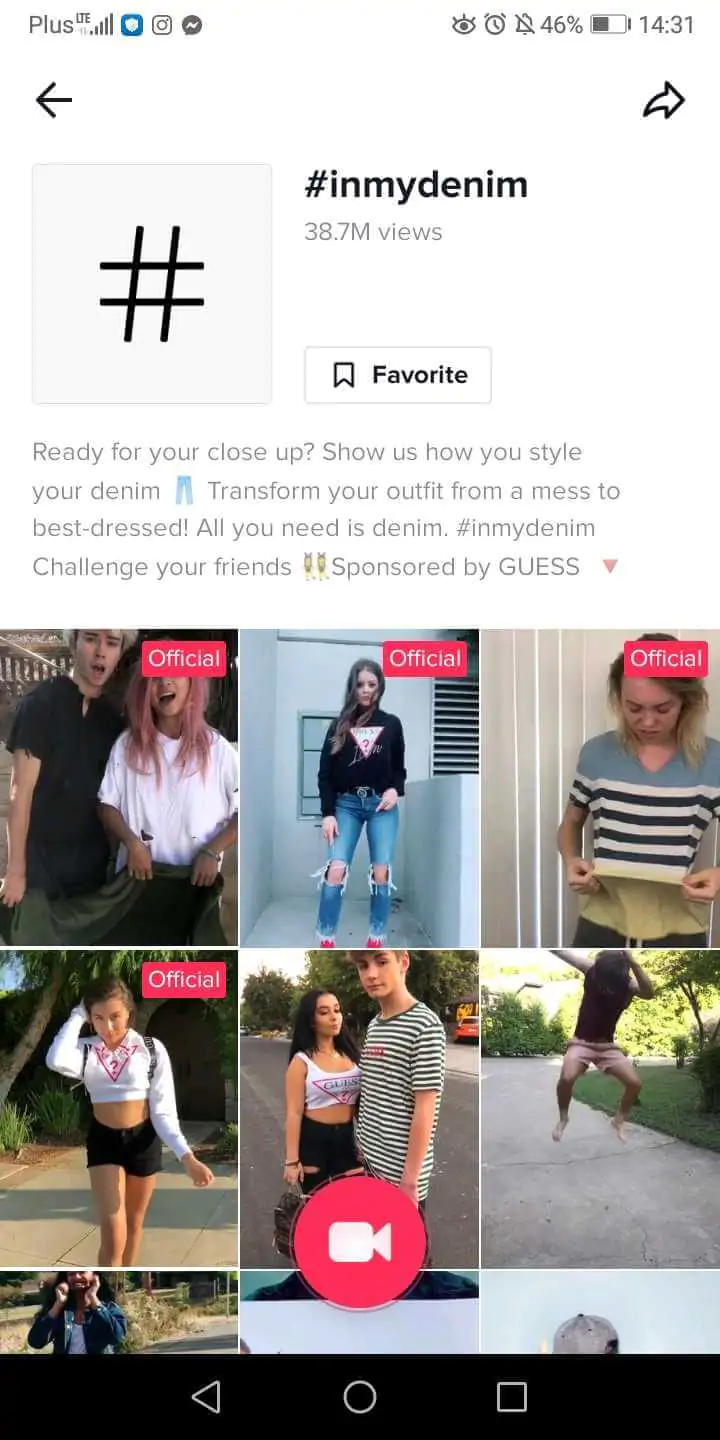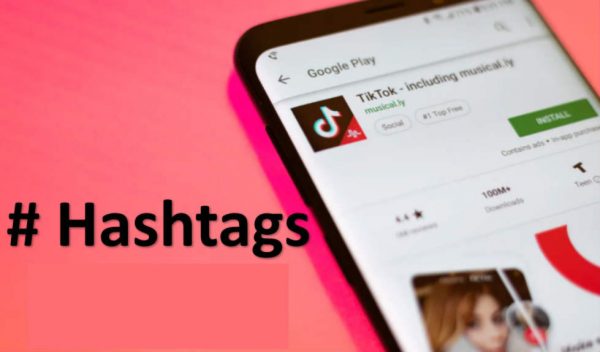Why Hashtags Matter on TikTok
Hashtags are a crucial component of any successful TikTok strategy, playing a significant role in increasing discoverability, reaching a wider audience, and driving engagement. By incorporating relevant hashtags into your TikTok content, you can tap into the platform’s vast user base and increase your chances of going viral. In fact, studies have shown that using hashtags on TikTok can lead to a 55% increase in engagement and a 21% increase in reach.
But why do hashtags matter so much on TikTok? The answer lies in the platform’s algorithm, which uses hashtags to categorize and surface content. When you use a hashtag in your TikTok caption, your content becomes part of a larger conversation, making it more likely to be discovered by users who are interested in that topic. This is especially important for brands and creators looking to increase their online presence and reach a wider audience.
For example, if you’re a fashion brand looking to promote your latest clothing line, using relevant hashtags like #fashion or #style can help your content reach a larger audience of users who are interested in fashion. Similarly, if you’re a creator looking to showcase your dance skills, using hashtags like #dance or #choreography can help your content reach a larger audience of users who are interested in dance.
By incorporating hashtags into your TikTok strategy, you can increase your chances of going viral and reaching a wider audience. But with so many hashtags to choose from, it can be difficult to know where to start. In the next section, we’ll explore the importance of understanding your target audience and how to use that information to choose relevant and effective hashtags.
Understanding Your Target Audience: The Key to Choosing Relevant Hashtags
To create effective hashtags on TikTok, it’s essential to understand your target audience, including their interests, preferences, and behaviors. By knowing what resonates with your audience, you can choose hashtags that are more likely to resonate with them, increasing the chances of your content going viral.
So, how do you get to know your target audience on TikTok? Start by analyzing your existing followers and engagement patterns. Look at the types of content that perform well, the hashtags that are used, and the conversations that are happening around your brand. This will give you a sense of what your audience is interested in and what they’re looking for.
Next, use TikTok’s built-in analytics tool to gain insights into your audience’s demographics, interests, and behaviors. This will help you identify patterns and trends that can inform your hashtag strategy. For example, if your audience is primarily made up of 16-24-year-olds who are interested in music and dance, you may want to use hashtags like #music or #dance to reach them.
Another way to understand your target audience is to conduct research on TikTok’s community challenges and trending topics. Look at what’s currently popular and what types of content are being created around those topics. This will give you a sense of what’s resonating with the broader TikTok community and what types of hashtags are likely to perform well.
By understanding your target audience and using that information to choose relevant hashtags, you can increase the effectiveness of your TikTok marketing strategy and improve your chances of going viral. In the next section, we’ll explore how to research and identify trending hashtags on TikTok, including using tools like Hashtagify and RiteTag.
How to Research and Identify Trending Hashtags on TikTok
Identifying trending hashtags on TikTok is crucial to increasing the visibility of your content and making it go viral. With millions of active users, the platform’s algorithm favors content that uses relevant and popular hashtags. To research and identify trending hashtags, you can use a combination of tools and strategies.
One of the most effective ways to find trending hashtags is to use TikTok’s autocomplete feature. When you start typing a keyword in the search bar, the platform suggests popular hashtags related to that keyword. You can also use the “Discover” page to find trending hashtags and challenges.
Another way to research trending hashtags is to use third-party tools like Hashtagify and RiteTag. These tools provide insights into hashtag popularity, related hashtags, and even suggest hashtags based on your content. Hashtagify, for example, offers a “Hashtag of the Day” feature that highlights popular hashtags across various categories.
You can also use social media listening tools like Hootsuite and Sprout Social to track hashtag conversations and identify trending topics. These tools allow you to monitor hashtags, keywords, and even specific TikTok accounts to stay on top of trending content.
When researching trending hashtags, it’s essential to consider the niche or topic you’re targeting. Using a hashtag like #fashion, for example, may be too broad and competitive. Instead, try using a more specific hashtag like #sustainablefashion or #fashionforwomenover30. This will help you reach a more targeted audience and increase your chances of going viral.
Remember, the key to making your content go viral on TikTok is to use a combination of relevant, popular, and niche hashtags. By researching and identifying trending hashtags, you can increase your content’s visibility, reach a wider audience, and drive engagement. Try to include the hashtag “hashtag for tiktok to go viral” in your content to attract users searching for viral content.
Some popular tools for researching trending hashtags on TikTok include:
- Hashtagify
- RiteTag
- TikTok’s autocomplete feature
- Hootsuite
- Sprout Social
By leveraging these tools and strategies, you can stay on top of trending hashtags and increase your chances of making your content go viral on TikTok.
The Power of Niche Hashtags: Why Specificity Matters
When it comes to creating a hashtag strategy on TikTok, many users make the mistake of using broad, generic hashtags that are highly competitive and often irrelevant to their content. However, using niche hashtags can be a game-changer for increasing engagement, reducing competition, and improving brand relevance.
Niche hashtags are specific and targeted to a particular audience or topic. They have a lower volume of posts compared to broader hashtags, which means less competition and a higher chance of your content being discovered. For example, instead of using the hashtag #fashion, which has over 30 billion views, you could use #sustainablefashion or #fashionforwomenover30, which have a more targeted audience and lower competition.
Using niche hashtags can also help improve brand relevance and increase engagement. When you use a hashtag that is specific to your brand or niche, you are more likely to attract users who are interested in your content and will engage with it. This can lead to increased likes, comments, and shares, which can help make your content go viral.
Some examples of successful niche hashtags on TikTok include:
- #bookstagram (for book lovers)
- #gamingcommunity (for gamers)
- #foodieadventures (for food enthusiasts)
- #travelvlog (for travel enthusiasts)
When creating a niche hashtag strategy, it’s essential to consider your target audience and their interests. Ask yourself:
- What are my audience’s hobbies and interests?
- What topics are they passionate about?
- What specific keywords and phrases do they use when searching for content?
By answering these questions and using niche hashtags, you can increase your chances of creating content that resonates with your audience and goes viral on TikTok. Remember to include the hashtag “hashtag for tiktok to go viral” in your content to attract users searching for viral content.
Additionally, you can use tools like Hashtagify and RiteTag to find niche hashtags and track their performance. These tools provide insights into hashtag popularity, related hashtags, and even suggest hashtags based on your content.
In conclusion, using niche hashtags is a powerful way to increase engagement, reduce competition, and improve brand relevance on TikTok. By targeting specific audiences and topics, you can create content that resonates with your audience and goes viral. So, start using niche hashtags today and watch your TikTok content thrive!
Creating a Branded Hashtag: A Guide to Building a Community
Creating a branded hashtag on TikTok can be a powerful way to build a community, increase brand awareness, and encourage user-generated content. A branded hashtag is a unique and memorable hashtag that is specific to your brand or business. It can be used to create a sense of identity and belonging among your followers, and can help to establish your brand as a thought leader in your industry.
When creating a branded hashtag, it’s essential to choose a hashtag that is relevant to your brand and resonates with your target audience. Consider using a combination of your brand name, a keyword or phrase that is relevant to your industry, or a call-to-action that encourages users to share their own content. For example, #NikeJustDoIt or #CocaColaShareAHug.
Once you’ve created your branded hashtag, it’s essential to promote it across all of your social media channels, including TikTok, Instagram, Twitter, and Facebook. This will help to increase visibility and encourage users to start using your hashtag. You can also include your branded hashtag in your TikTok bio, so that users can easily find and use it.
To encourage user-generated content, consider running a contest or challenge that encourages users to share their own videos or photos using your branded hashtag. This can be a fun and engaging way to build a community and create a sense of excitement around your brand. For example, #TikTokDanceChallenge or #FashionForACause.
Some benefits of creating a branded hashtag on TikTok include:
- Building a community and establishing a sense of identity and belonging among followers
- Increasing brand awareness and establishing your brand as a thought leader in your industry
- Encouraging user-generated content and creating a sense of excitement around your brand
- Providing a unique and memorable way to track and measure the performance of your content
When creating a branded hashtag, it’s also essential to consider the following tips:
- Keep it simple and memorable
- Make it relevant to your brand and target audience
- Promote it across all of your social media channels
- Encourage user-generated content and engagement
- Track and measure the performance of your hashtag using analytics tools
By creating a branded hashtag on TikTok, you can build a community, increase brand awareness, and encourage user-generated content. Remember to include the hashtag “hashtag for tiktok to go viral” in your content to attract users searching for viral content.
Some popular brands that have successfully created branded hashtags on TikTok include:
- Nike – #NikeJustDoIt
- Coca Cola – #CocaColaShareAHug
- Apple – #AppleEvent
- Disney – #DisneyInspired
By following these tips and creating a branded hashtag, you can establish your brand as a thought leader in your industry and build a community of engaged and loyal followers.
How to Use Hashtags Strategically: A Step-by-Step Guide
Using hashtags strategically on TikTok is crucial to increasing the visibility of your content, reaching a wider audience, and driving engagement. Here’s a step-by-step guide on how to use hashtags strategically on TikTok:
Step 1: Choose the Right Number of Hashtags
Using too many hashtags can look spammy and may not be effective. TikTok allows you to use up to 150 hashtags per post, but it’s recommended to use between 5-10 relevant hashtags. This will help you to target a specific audience and increase your chances of going viral.
Step 2: Choose Relevant Hashtags
Choose hashtags that are relevant to your content and target audience. Use a mix of niche and broad hashtags to reach a wider audience. You can use tools like Hashtagify and RiteTag to find relevant hashtags and track their performance.
Step 3: Post at the Right Time
Posting at the right time can increase your chances of going viral. TikTok’s algorithm favors content that performs well in the first few hours after posting. Post your content when your audience is most active, which is usually during peak hours (3-5 pm EST).
Step 4: Track Performance
Tracking the performance of your hashtags is crucial to understanding what works and what doesn’t. Use analytics tools like TikTok Analytics or third-party apps to track your hashtag performance. Monitor your engagement, reach, and clicks to adjust your strategy accordingly.
Step 5: Adjust Your Strategy
Adjust your strategy based on your performance data. If a particular hashtag is not performing well, try using a different one. Experiment with different hashtags and posting times to find what works best for your content.
Some popular tools for tracking hashtag performance on TikTok include:
- TikTok Analytics
- Hashtagify
- RiteTag
- TikTok Insights
By following these steps, you can use hashtags strategically on TikTok and increase your chances of going viral. Remember to include the hashtag “hashtag for tiktok to go viral” in your content to attract users searching for viral content.
Some popular hashtags on TikTok that can help you go viral include:
- #TikTok
- #Viral
- #Trending
- #Challenge
- #Dance
By using these hashtags strategically and following the steps outlined above, you can increase your chances of going viral on TikTok and reaching a wider audience.
Common Hashtag Mistakes to Avoid on TikTok
Using hashtags on TikTok can be an effective way to increase discoverability, reach a wider audience, and drive engagement. However, there are some common mistakes to avoid when using hashtags on TikTok. Here are some of the most common mistakes and how to avoid them:
Overusing Hashtags
Using too many hashtags can look spammy and may not be effective. TikTok allows you to use up to 150 hashtags per post, but it’s recommended to use between 5-10 relevant hashtags. Using too many hashtags can also lead to a decrease in engagement and a lower ranking in the algorithm.
Using Irrelevant Hashtags
Using irrelevant hashtags can lead to a decrease in engagement and a lower ranking in the algorithm. Make sure to use hashtags that are relevant to your content and target audience. Use a mix of niche and broad hashtags to reach a wider audience.
Neglecting to Track Performance
Neglecting to track the performance of your hashtags can lead to a lack of understanding of what works and what doesn’t. Use analytics tools to track your hashtag performance and adjust your strategy accordingly.
Not Using a Branded Hashtag
Not using a branded hashtag can lead to a lack of brand awareness and a decrease in engagement. Create a branded hashtag and encourage your followers to use it when sharing content related to your brand.
Not Timing Hashtags Correctly
Not timing hashtags correctly can lead to a decrease in engagement and a lower ranking in the algorithm. Post your content when your audience is most active, which is usually during peak hours (3-5 pm EST).
Some common mistakes to avoid when using hashtags on TikTok include:
- Overusing hashtags
- Using irrelevant hashtags
- Neglecting to track performance
- Not using a branded hashtag
- Not timing hashtags correctly
By avoiding these common mistakes, you can use hashtags effectively on TikTok and increase your chances of going viral. Remember to include the hashtag “hashtag for tiktok to go viral” in your content to attract users searching for viral content.
Some popular tools for tracking hashtag performance on TikTok include:
- TikTok Analytics
- Hashtagify
- RiteTag
- TikTok Insights
By using these tools and avoiding common mistakes, you can use hashtags strategically on TikTok and increase your chances of going viral.
Measuring Success: How to Track the Performance of Your Hashtags
Tracking the performance of your hashtags on TikTok is crucial to understanding what works and what doesn’t. By monitoring your hashtag performance, you can adjust your strategy to optimize your results and increase your chances of going viral. Here’s how to track the performance of your hashtags on TikTok:
Using Analytics Tools
TikTok provides a built-in analytics tool that allows you to track your hashtag performance. You can access this tool by going to your profile, clicking on the three dots, and selecting “Analytics.” From here, you can view your hashtag performance, including the number of views, likes, and comments your hashtags have received.
Monitoring Engagement
Monitoring engagement is another way to track the performance of your hashtags. You can do this by tracking the number of likes, comments, and shares your hashtags receive. You can also use tools like Hashtagify and RiteTag to track your hashtag engagement and identify trends.
Adjusting Your Strategy
Based on your hashtag performance, you can adjust your strategy to optimize your results. If a particular hashtag is not performing well, try using a different one. Experiment with different hashtags and posting times to find what works best for your content.
Some popular tools for tracking hashtag performance on TikTok include:
- TikTok Analytics
- Hashtagify
- RiteTag
- TikTok Insights
By using these tools and monitoring your hashtag performance, you can adjust your strategy to optimize your results and increase your chances of going viral. Remember to include the hashtag “hashtag for tiktok to go viral” in your content to attract users searching for viral content.
Some key metrics to track when measuring the success of your hashtags include:
- Views
- Likes
- Comments
- Shares
- Engagement rate
By tracking these metrics and adjusting your strategy accordingly, you can optimize your hashtag performance and increase your chances of going viral on TikTok.
In addition to tracking your hashtag performance, it’s also important to monitor your overall TikTok performance. This includes tracking your follower growth, engagement rate, and content performance. By monitoring your overall performance, you can identify areas for improvement and adjust your strategy to optimize your results.







